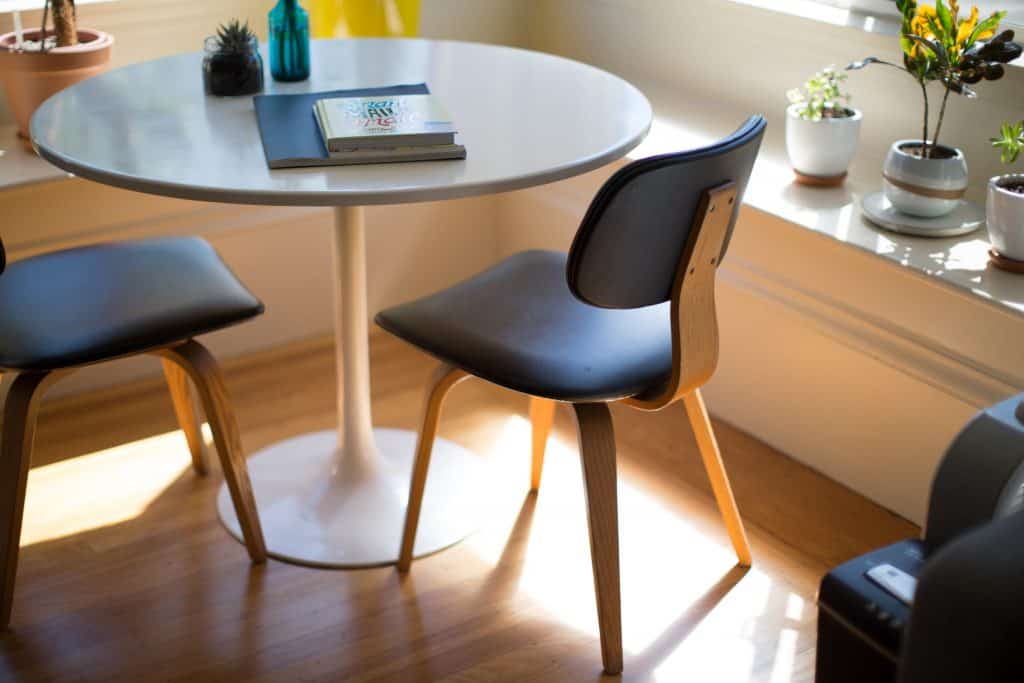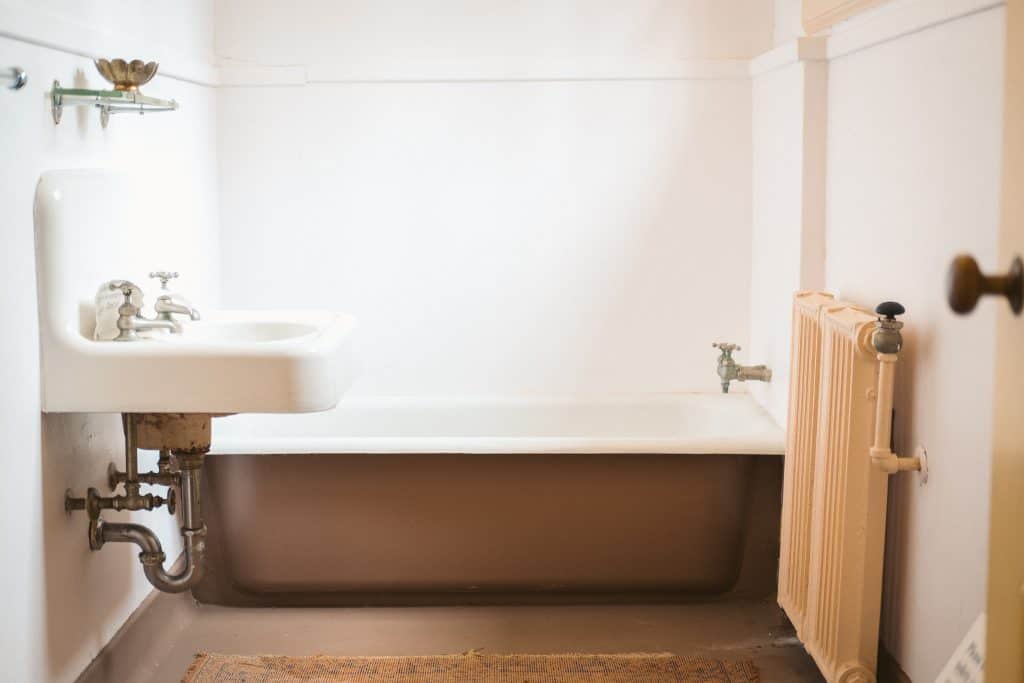Is your clutter a communication issue? Stop the blame and get some perspective.
If it feels like your family is not on your side when trying to create an organized home, you may want to look at your own behavior in the situation.
Have you asked your family for help? Have you expressed to them why getting organized is important to you? Have you explained why you moved the stockpot to the garage?
Communication is key to keeping the clutter to a minimum. You need the whole family to buy into the process. (More on how to farther in).
A big part of why clutter piles up is that your family doesn’t know what to do. It is time to talk about clutter.
How about what you are communicating to yourself? Do you make assumptions? Are spinning thoughts about clutter a communication issue?
This lack of communication leads to frustration, a tendency to nag, and complaints. In turn, this causes many people to shut down or retaliate and resist further communication and helpful behavior.
A while back someone asked me if I had enough empathy to do my job. She heard me on the radio and believed that I was too harsh in my comments about people’s stuff, and that it isn’t as easy for people as I was making it sound.
If it were that easy, easy to let it go, easy to recognize the junk amongst the gems, then everyone would be organized.
She felt that I lacked the ability to understand and share the feelings of another.
The general comments I make on the radio are not designed to be judgements, but to maximize impact, with recognizable scenarios to get you thinking and feeling. Yippy! I said something that made her think! I hit a button!
Instead of getting defensive and proclaiming my sensitivities to my clients situations, I took it as an opportunity to facilitate change.
Is your clutter a communication issue? What I know about change:
The first thing I notice with all of my clients, heck with everyone that calls to even inquire about working with me, is the overwhelm. Anxiety and fear are next. And they are all connected.
Your environment reflects your prevailing emotions so, we usually have to dig through some stuff to get to the joy and excitement that is buried under all that other stuff.
You see, I’m quite intuitive, and recognize patterns – I know what you really feel, feel what you really feel, not what you say you feel. I actually have to put up a force field when I work with some clients, and yes they know who they are, or we would both be completely overwhelmed and not get anything done.
I believe that change happens somewhere between discomfort and anxiety. It is my job to walk you through it so you can experience the other side.
You have become comfortable in your overwhelm and now it only feels uncomfortable when someone else mentions it. Usually that discomfort is just the deep knowledge that you can do better, if only you knew how.
It’s my job as a coach to help you practice better decision making so it is the joy and excitement that is reflecting back at you, not the overwhelm.
So yes, I will call you on your stuff because it is the easiest way to:
- Breakthrough your denial. The junk represents your fear and becomes the excuse for not doing the fearful thing. Fear is only temporary. It subsides one way or another, and I have to tell you that I have never lost a client because we tossed a piece of paper.
- Express your frustrations! And seek solutions, our brains love a challenge.
- Recognize that you are responsible for your own happiness. The stuff you buy can’t make you happy. To be happy, the stuff – physical and emotional – need to be put in the proper place, enjoyed and taken care of.
- Find the way to simplify, one that works for you, and with your natural talents. That way you get the longest lasting results.
Sometimes what you need isn’t understanding (although I do, more that you know) but a swift kick in the pants. I promise, some of the pants will end up on hangers where you can easily put them on when you need them, and they will fit just right.
Is your clutter a communication issue? Identify your collections – or not.
I watched several episodes of Collection Intervention a while back. It got me to think a lot about the collections I have run across in my work. I had to laugh a little bit when I realized how many of my clients call themselves collectors as a way to feel better about all the stuff that has piled up.
They claim it’s valuable stuff and I shouldn’t step on it as they toss it across the room to get it out of their own way.
Very few people are true collectors. To take immaculate care and preserve, catalog and enjoy the items they collect is usually 3 steps more than most folks will do.
It’s a time suck, and often there isn’t a huge payoff, other than the love of the category, at the other end.
Bottom line is that if you do not take care of your things, it can’t be a true collection. It’s just a bunch of stuff. If you do not take good care of it, it might not even be useful stuff for much longer.
This realization is a jolt my clients have to come to when they want to live a fuller life.
The good intentions can’t make up for the unfulfilled promises that occur when you do not take care of your stuff. It’s more than just the safety and health issue of the things you might trip over or that might fall on your head.
The more things pile up, the less sure you are of what you own. That can lead you to feel of overwhelm and devaluation.
Just like a true collector, one great way to keep clutter to a minimum is to take your responsibility to your stuff seriously. You will feel way more confident and therefore much less frustration once you know what you own, where it is, when and how to replace it if necessary.
3 new ways to think about your stuff to help you get started.
You paid good money for it. So, cherish it. Use it. Enjoy it. Revel in it.
If you will not take care of it and enjoy it, why buy it in the first place? Don’t buy another one. Instead find the one you already own, and take care of it. You already paid good money for it once, no need to do so again until it’s used up. This applies to the things you need and love, not your excuse to keep everything you ever purchased.
You brought it home. Now it is your responsibility.
You get to help it fulfill its purpose, or explore new options. It depends on you to keep it clean and safe and useful. Keep just your favorites, they will become precious and useful. Sometimes that might mean that you have to put it back in circulation so the right person can help it do that. Also, when something breaks, it no longer wants to live with you.
It was for a purpose. So, use it for that.
Use it up, return it, share it. Keep your word and good intentions in a timely manner. Let go of projects you will never really get around to and all the stuff you picked up for that purpose. It is so much better to fully engage with a project, complete it and move on to the next one than to constantly have 20 going at once, none finished, all dusty and helping you feel like there is never enough time.
All good collectors know that knowing what you own and where it is saves frustration and helps you feel competent.
The good news is that being organized in a shared environment is easier than you think.
Is your clutter a communication issue? Follow a few simple steps and you will see improvement almost immediately.
Through the process, keep in mind that you’re leading by example, so it is a good idea to turn off the nag and blame and listen to their feedback.
Figure out why you want to be organized. Maybe it is to create a nurturing and supportive environment to live your best life.
Establish standards and expectations for the way your family wants to live in the space you have. Get their input and give each room a purpose. Then give each activity a time and space limit.
An example would be that the family room’s purpose is fun. It has the media center, books and music.
The standard is that every item has a place in the room and that TV and video game play is only allowed between certain hours.
The expectation is that when you are done watching the TV you put the remote back where it goes, and take your snack stuff back to the kitchen.
To keep the flow of communication open and clutter to a minimum, create rotation systems in which one item is replaced when it is used up or expired, such as last week’s newspapers. Centralize and make accessible to all the shopping lists and family information notebook with schedules and contact information for school, work, activities and emergencies.
Also, read Maximize Your Time.
I collect Rock Art Posters and Super Balls and Vintage Kitchen Gadgets. What do you collect?



